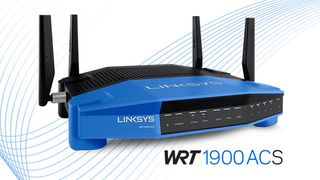Router SoC 101
Do you ever wonder what goes on inside a router? In this article, we take a close look at the SoCs inside of them, which help us manage and maintain our connected lives.
Smaller Chipset Manufactures
Marvell Technology Group creates SoCs for networking devices, often pairing them with Broadcom transceivers. Chips in Marvell's Armada 38x family are equipped with ARMv7 Cortex-A9 dual-core processors (with the 88F6810 chip, Armada 380, being an exception). They feature GbE, DDR3/3L/4, PCIe 2.0 links and a host of other features that make Marvell competitive. We're not seeing many devices with the company's hardware, though. Armada XP (MV78XXX) chips, with up to a quad-core ARM v7 PJ4 processors, seem to share the same fate.
A new addition to Marvell's Avastar SoC family was announced in Q1 2015, targeted at enterprise APs, hotspots and residential multi-stream (video or gaming) applications. An earlier iteration, the 88W8864, supported up to 1.3 Gb/s and 4x4 MIMO. It was used in the Linksys WRT1200AC and WRT1900AC wireless routers.

We're calling it a "smaller" manufacturer, but in reality, Realtek is one of the largest chip makers in the world. But the company's networking segment peaked with its 10/100 Ethernet controllers. Its wireless offering haven't enjoyed the same level of market penetration. So it's not the most popular chip on the block, but it does deserve a mention: the 2013 ADSL2+ modem/router from RealTek, based on its Lextra LX processor (a 32-bit implementation of the MIPS architecture) held its own for a while. It was used in D-Link's DSL-2740E, Huawei's WS319 and other routers.

Quantenna specializes in wireless SoC transceivers. Its R&D focused on high-end 802.11ac and 802.11n devices. Competing neck and neck with the giants of the industry, Quantenna introduced a number of new devices in 2015, all on the cutting edge. It was first to launch a 4x4 MU-MIMO 802.11ac chipset, and has demonstrated a 10G system. The QSR2000 Wave 2 is a transceiver designed for high-speed Wi-Fi routers. It is marketed as an integrated chipset for 802.11an/ac or 802.11b/g/n Wave 2 applications, dual-band switchable, with 4x4 MU-MIMO four spatial streams. It has 80MHz channels (for the 5GHz band), PCIe 2.0 connectivity and a peak PHY of 1700 Mb/s.
The QSR10G family of chipsets supports 10Gb speeds. There are four variants, ranging from the "U"—a top-tier 12-stream, dual-band device with a peak PHY rate of 10 Gb/s—down to the "5" variant, with eight-stream 5GHz single-band operation with a peak PHY rate of 8.6 Gb/s.
Current page: Smaller Chipset Manufactures
Prev Page Chipset Vendors: MediaTek Next Page The Future Of Router SoCsStay on the Cutting Edge
Join the experts who read Tom's Hardware for the inside track on enthusiast PC tech news — and have for over 25 years. We'll send breaking news and in-depth reviews of CPUs, GPUs, AI, maker hardware and more straight to your inbox.
-
bwhiten Uhhhh...Those first pictures are not "schematics". They are CAD renderings of the box and main board at best, but definitely not schematics.Reply -
EdJulio ReplyUhhhh...Those first pictures are not "schematics". They are CAD renderings of the box and main board at best, but definitely not schematics.
Thanks, bwhiten. Updated the caption...
-
bit_user Nice article!Reply
Small, irrelevant fact: MIPS was once owned by SGI and used in their servers and workstations. They even used a MIPS CPU in the N64, which they designed for Nintendo. In fact, that was largely the outcome of a previous (if not the first) wave of VR hype. But, I digress...
Also, most people consider ARM to be RISC. Or, at least as much as anything is, these days. Indeed, the name once stood for Advanced RISC Machines.
But I didn't know what MIPS originally stood for, so thanks for that. I wonder whether or how long that remained true of their architectures. -
EdJulio Reply17548227 said:Nice article!
Small, irrelevant fact: MIPS was once owned by SGI and used in their servers and workstations. They even used a MIPS CPU in the N64, which they designed for Nintendo. In fact, that was largely the outcome of a previous (if not the first) wave of VR hype. But, I digress...
Also, most people consider ARM to be RISC. Or, at least as much as anything is, these days.
Thanks! I'll share this with Gene! Cheers!!! -
bit_user Reply
Thanks, but I did say it was irrelevant. It really has no bearing on the routers using these chips.17548234 said:Thanks! I'll share this with Gene! Cheers!!! -
GeneFabron ReplyNice article, is there any more on how tech works? Like cpu and gpu?
Hi QuangT, we have a Wireless Routers 101 http://www.tomshardware.com/reviews/wireless-routers-101,4456.html and a PSUs 101 http://www.tomshardware.com/reviews/power-supplies-101,4193.html article, and there will be more coming soon! -
Gabriel_1965 Question: I've seen a router with 72 cores would that be made to be a 72 core pic and I could use the cores for multi ore computing?Reply
